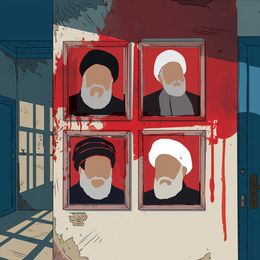Is killing top leaders the best way to destroy militant organisations? The word “militant” is used because one man’s freedom fighter is another’s terrorist. This question rises now because of Israel’s assassination of Hezbollah leader Hassan Nasrallah. Experts are divided. Some believe: kill the leaders and the organisation dies. Others say: kill the leaders, but you cannot kill the ideology.
Four decades of reporting insurgencies lead me to believe that “decapitation”—targeted killing of top leaders—invariably delivers a death blow to militant organisations. My first experience was in Punjab in the 1980s-1990s when bus massacres and school bombings struck terror in the countryside—and in New Delhi. Questioned about his strategy to quell Sikh militancy, supercop K.P.S. Gill told me: “Kill the leaders.” He succeeded. Insurgency died, democracy returned.
Spectacles of violence were most horrifying in Sri Lanka—not during the Tamil revolt, but during the Sinhala extremist JVP uprising that brought the nation to a terror-stricken standstill. Government-backed vigilantes in the countryside raided home-to-home, dragging out young JVP suspects and impaling their body parts on compound walls. In 1989, JVP leader Rohana Wijeweera was killed in police custody. The JVP as an insurrectionist movement unravelled. A democratised JVP member is now the president of the country.
LTTE leader Velupillai Prabhakaran, Sri Lankan state’s dreaded terrorist and Tamil eelam’s iconic freedom fighter, was killed in 2009 along with his family and senior leaders. The Tamil armed struggle ended in Sri Lanka. But experts who say you can kill leaders but not the ideology are right, too, especially when governments fail to address the legitimate grievances of the discriminated people. In most cases, the exhausted and devastated local population flee into exile in foreign lands. Sometimes, their children continue the struggle peacefully—campaigning for justice, lobbying local governments, researching into atrocities, keeping the ideology of independence alive in their hearts and minds. A few years before he was killed, Prabhakaran told me, in an interview, his motivating belief: “He who dares wins.” That became the title of my Time magazine article. A decade later, at the Dubai airport I saw a young man wearing a T-shirt with these words. His facial features indicated he was Tamil. I asked him in Tamil, “So you are Prabhakaran’s fan.” He froze.
Al Qaeda’s rise as a fearsome organisation that staged 9/11 ended after the US killed Osama bin Laden. It morphed into Islamic terror franchises with varying degrees of capabilities for local disruption. Decentralisation helps survival. When militant groups become autocratic, they are strong—until the leader dies. Paranoid about coups, leaders rarely appoint successors. But Hezbollah is different. It is big, has MPs in the Lebanese parliament and is armed by Iran to fight Israel. Iran has assisted a clear command and control structure with every Hezbollah commander having a deputy, who has his deputy. Hezbollah, and not Nasrallah, is vital for Iran’s long-term security goal to keep Israel at bay. Israel has already targeted Nasrallah’s successor.
Israel’s decapitation and weakening of Hezbollah is ground-breaking. Says Middle East expert Paul Salem, “Israel has developed AI-bolstered intelligence capacity unseen in modern warfare.” This poses existential threats to grassroots dissident movements. AI-powered intelligence systems destroyed Hezbollah’s communication networks, arms depots and top leaders—feats of advanced spyware and AI-based surveillance technologies that the US and Israel excel in. As Google’s former AI researcher Meredith Whittaker revealed at a recent event, “AI is a derivative of surveillance.”
Pratap is an author and journalist.


